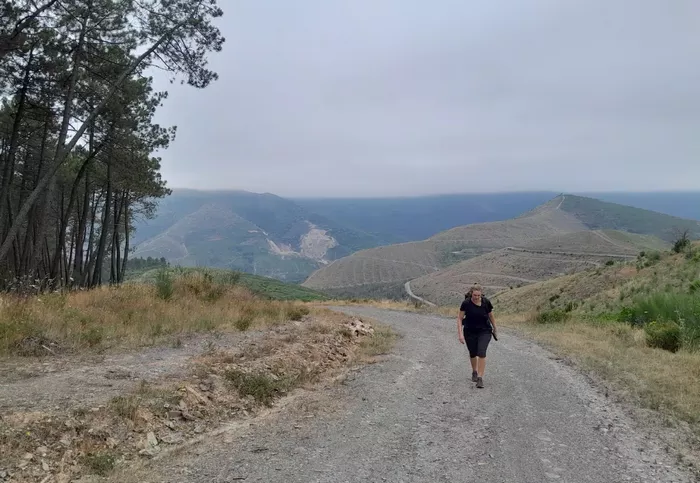Mark Eveleigh recounts the experience of hiking the lesser-known Camino del Invierno, or Winter Way, a peaceful alternative to the crowded Camino Francés pilgrimage route in northern Spain.
Reflecting on a past grueling 1,220km solo trek from Gibraltar, Eveleigh returned to northern Spain, this time embarking on a shorter and more relaxed journey. Accompanied by his wife Narina, they set out to walk approximately 320km from Astorga in Castilla y León, through remote Galician valleys, medieval villages, and wild landscapes, ending at the sacred city of Santiago de Compostela.
The couple’s first two days followed part of the popular Camino Francés, passing through small hamlets like Foncebadon and El Acebo, sustained by the estimated 230,000 annual pilgrims on this well-traveled path. The days were filled with lively, international camaraderie as hikers from around the world gathered over coffee and wine. At a pilgrim hostel in a converted convent in Foncebadon, some walkers were driven by religious devotion to visit the tomb of Saint James, while others sought adventure.
After this social introduction, under the historic walls of Ponferrada Castle, once guarded by Knights Templar monks, they left the bustling French Way to follow the less-traveled Camino del Invierno. This nearly unknown 265km route skirts south of the Galician mountains, originally devised to avoid snow in winter, but now appreciated year-round for its serene beauty and solitude.
Unlike the French Way’s abundance of cafes and bars, the Winter Way posed the challenge of scarce water sources, requiring the hikers to carry several liters of water and rely on aging fountains. Early on, they passed through quiet villages like Villalibre de la Jurisdicción and Priaranza del Bierzo, where locals like Amalia García warmly welcomed them with homemade coffee and sandwiches — a rare hospitality unlikely on the crowded French route.
Their first night was spent in the tiny hamlet of Villavieja, near a centuries-old fortress built by the Knights Templar. Over a communal meal, Basque pilgrims shared local slang about the persistent drizzle known as “chirimiri” and “calabobos,” highlighting the region’s wet climate, though their journey remained mostly dry.
During the 13 days of trekking, the couple encountered only a handful of other hikers, enjoying peaceful rest stops beneath ancient chestnut trees or in quiet plazas punctuated only by the clacking sounds of storks. Occasionally, they reunited with trail companions from Spain, Portugal, France, Holland, Ireland, and Zimbabwe at small village bars.
The wilderness along the Winter Way proved safe and inviting, even for solo female hikers like 67-year-old Zimbabwean pilgrim Niki Davies, who noted the warmth of local villagers despite the trail’s solitude. The landscape grew increasingly wild and remote, with sightings of deer, wild boar, and even wolf tracks near the nearby Sierra de la Culebra, known for its wolf packs. Brown bears inhabit the mountains to the north, adding to the area’s untamed character.
While bandits of medieval times had vanished, the quiet, lonely hills evoked the same sense of isolation that ancient pilgrims might have experienced, a stark contrast to the bustling crowds of the French Way.
As the journey neared its end, Eveleigh and Narina deliberately slowed their pace, reluctant to finish the tranquil walk. The arrival at Santiago was sudden and bustling, a vivid contrast to the solitude of the Winter Way. The pilgrims found themselves immersed in the lively atmosphere of the historic city, where the centuries-old tradition of pilgrimage continues.
Sitting on the sunlit stones of Praza do Obradoiro before the grand Santiago Cathedral, the couple already looked forward to their next Spanish hiking adventure, marking the end of one journey and the beginning of another.
Related Topics
- Savanna Shines as Premier Destination for Outdoor Enthusiasts and Small-Town Charm
- Cyclist to Ride 780 Miles from Rugby to Germany for Suicide Prevention and Hospice Care
- Bristol Unveils £15 Million Cycling Hub Plans for Lawrence Weston

